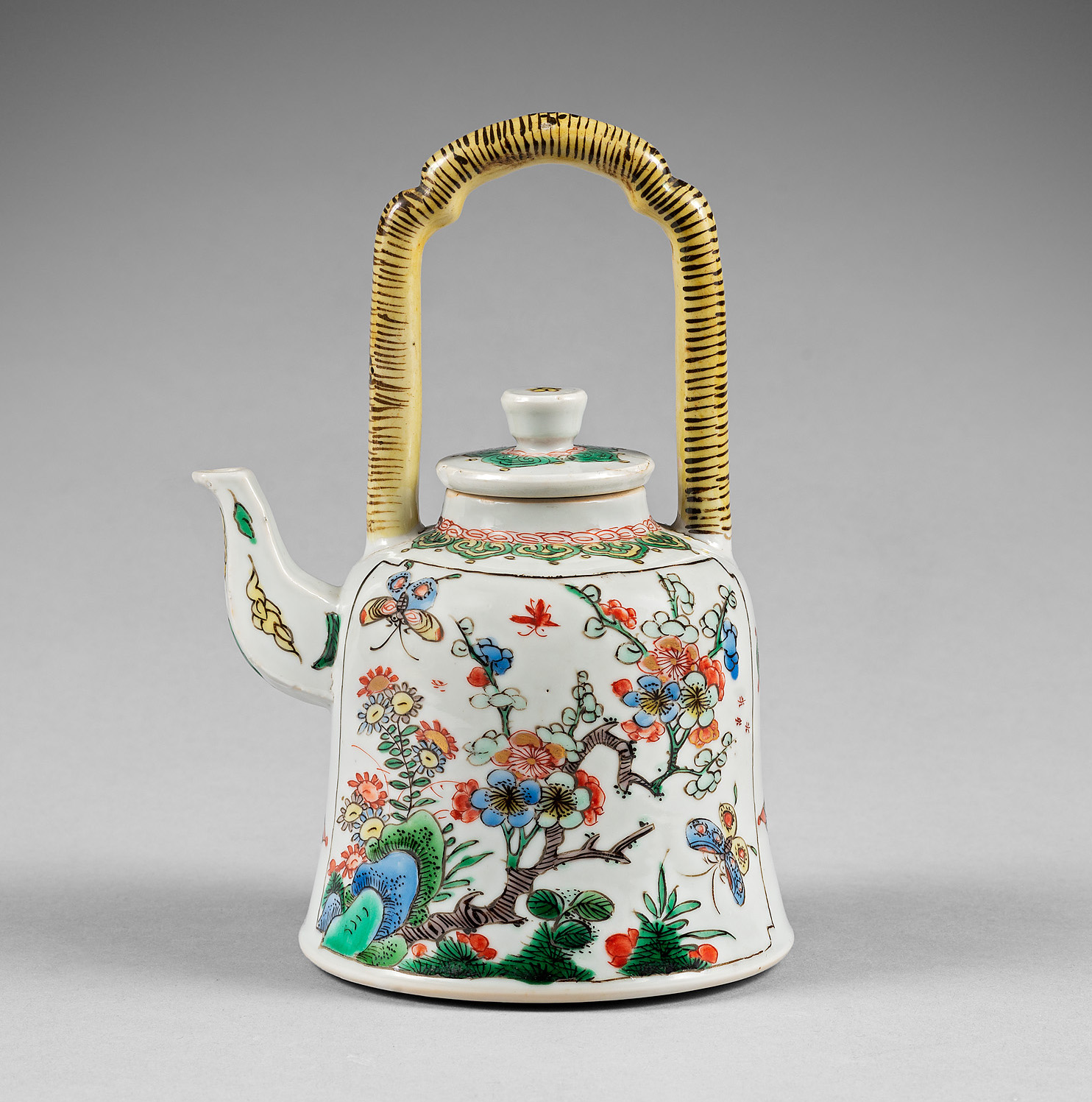
A dark aubergine-violet glazed tripod incense burner. Kangxi
Of ovoid form, this incense burner is perched on three feet, and its exterior surface is carved with large grooves imitating a gnarled tree trunk and is further decorated with applied branches of pines on its body.
- Country:
- China
- Period :
- Kangxi period (1662-1722), second half of the 17th.
- Material:
- Porcelain
- Dimension:
- 5.31 in. x. 4.92 in. (13,5 cm x 12,5 cm )
- Reference :
- D618
- Status:
- sold
Provenance
from a private French collection
Related works
An identical tripod censer is illustrated by Octave du Sartel in La porcelaine de Chine. Origines, fabrication, décors, marques, imitations, contrefaçons’, Paris, 1881, fig. 72.
Another identical tripod censer is illustrated by R. L. Hobson in The Catalogue of the George Eumorfopoulos Collection of Chinese, Corean, and Persian Pottery and Porcelain, 1921, T. IV, Pl. LV, no. D239.
Notice
The “aubergine” enamel (eggplant), also known as Qiepi zi, was made from a manganese containing byproduct from the purification process of the Chinese local cobalt, which was processed into a pure sapphire blue. Generally made of bronze or ceramic, incense burners and censers are containers sometimes covered with a perforated lid, in which incense is burned. They have played a role in religion and study for centuries
Censers find their origin in the tripod vessels of Neolithic pottery. The earliest examples in bronze date from the Shang (c. 1600- 1046 BC) and Western Zhou (c. 1045-771 BC) periods and were used as ritual and sacrificial vessels as well as cauldrons for cooking. The Qin and the subsequent Han dynasty (206 BC – 220) witnessed the establishment of the silk road, and benefited from imports of many foreign ingredients such as frankincense. Incense use grew significantly in variety and sophistication. By the Song dynasty (960-1279), censers had made their way into the scholar’s studio. In this setting, censers were used as incense burners – a sensory accoutrement and source of inspiration for the Chinese scholar’s artistic and literary pursuits.
During the Ming dynasty (1368-1644), archaic bronzes had a huge impact on popular culture, their connoisseurship was a social requirement of education and good taste. To meet the market demands, new censers mimicing these Bronze Age forms were produced. They were made in two basic forms: a square vessel on four feet, fitted with two handles, and a circular tripod vessel. During this period, the shapes of the censers and incense burners were refined. Alongside these more traditional forms, censers were also cast in a variety of shapes and sizes including stylized lobed forms and naturalistic peach-shaped vessels. From simple loop shapes to rope-like twists and sculptural animal forms, handles have constantly been a distinctive feature of Chinese censer design, as on the present example.
The modern Chinese term for “censer,” xianglu (香爐, “incense burner”), is a combination of xiang (“incense, aromatics”) and lu (爐, “brazier; stove; furnace”). Another common term is xunlu (熏爐, “a brazier for fumigating and perfuming”). Burning incense is considered to be the most popular way to get rid of negative energies in a house and bring forth new positive vibes.
Photography : Jérémie Beylard / Agence PHAR

























